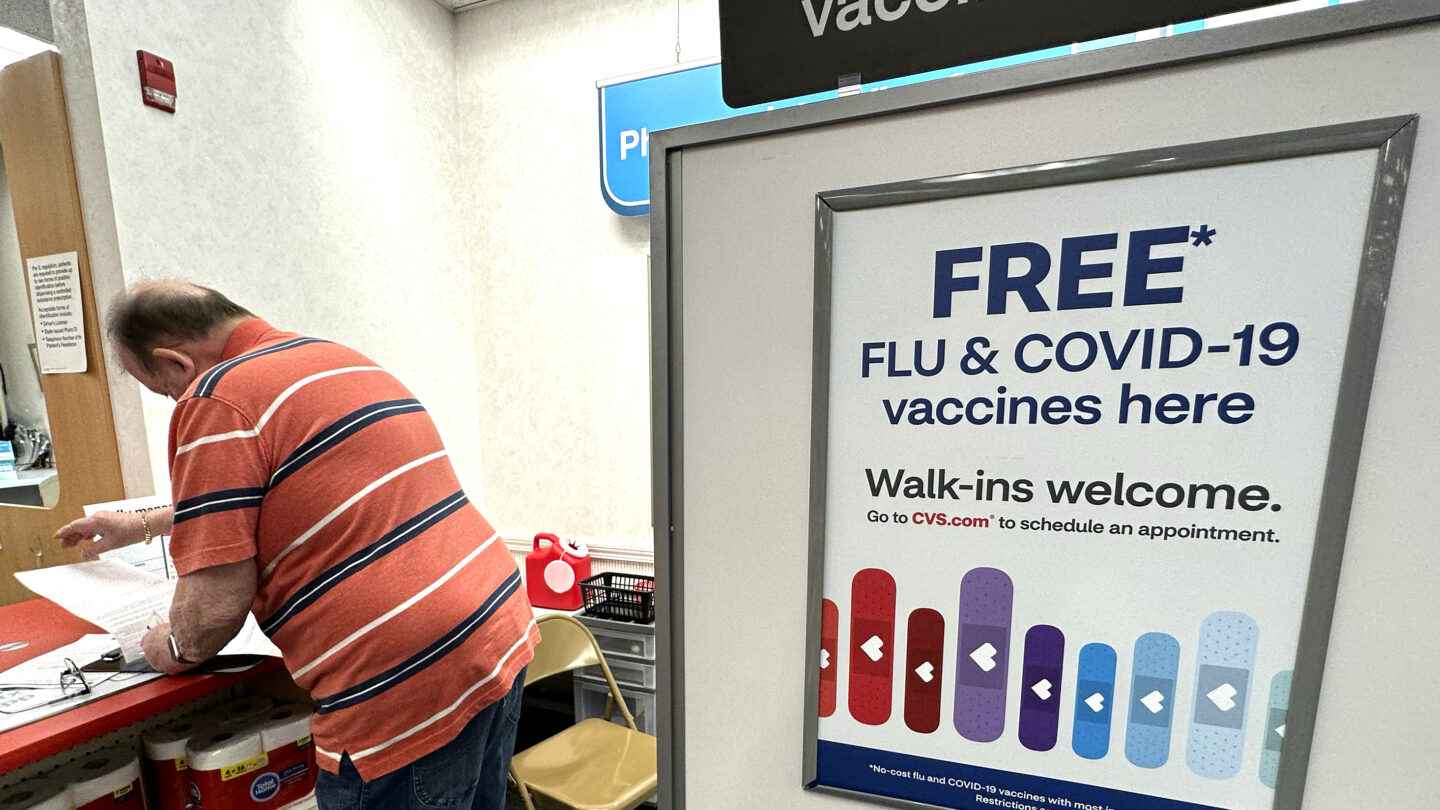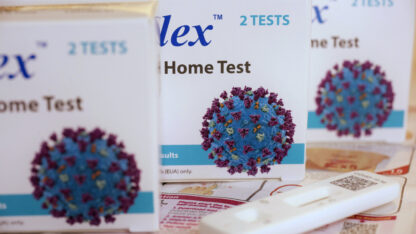As the weather cools down, health officials are gearing up for a new season of sickness. It’s the time for gathering indoors and spreading respiratory viruses.
So what is brewing in the viral stew?
There’s the big three to start: the flu, respiratory syncytial virus (RSV) and COVID-19. “These are the three that cause the most utilization of the health care system and the most severe disease,” says Dr. Demetre Daskalakis, acting director of the Centers for Disease Control and Prevention’s National Center for Immunization and Respiratory Diseases.
Last year, 40% of U.S. households were hit with at least one of these viruses, according to a survey from KFF, a nonprofit health policy research group.
And there are other viruses in the mix, says Marlene Wolfe, an epidemiologist and assistant professor at Emory University. There are rhinoviruses and non-COVID coronaviruses — both can cause the common cold.
There are parainfluenzas — in a different family from flu-causing influenzas — which can cause croup and pneumonia in children. And there’s enterovirus D68, which caused a national respiratory illness outbreak in 2014.
There’s also human metapneumovirus, a relatively new virus first identified in 2001. It’s in the same family as RSV and has similar symptoms.
Wastewater data reveals a fuller viral picture
Wolfe says that data from a wastewater study showed that human metapneumovirus circulated a lot last winter. In California, where the samples were collected, it could have been a fourth virus added to the tripledemic mix.
Wolfe co-leads WastewaterScan, a program that provides a granular, real-time look at circulating pathogens, based on testing wastewater samples from around the United States.
A lot of these viruses have the same cold- and flu-like symptoms: coughing, sneezing, aches, fevers, chills. These infections may not lead to doctor’s visits, but they cause sickness and misery. Analyzing wastewater data, collected from community-level sewage plants, means researchers are starting to see the full picture of what’s circulating.
That means data comes in “even from people who are just mildly sick and sipping tea at home,” Wolfe says. The wastewater information helps show how these different viruses intersect, Wolfe says.
Knowing what’s circulating locally could help health care workers and hospital systems plan for surges. “If you have multiple of these viruses [surging] at the same time, that could be worse for individuals and worse for the systems that are trying to take care of them,” she says.
It’s still early in the season. So far, national data shows there are medium levels of COVID-19 going around and low levels of other respiratory viruses in most of the country, though some southeastern states are seeing increases in RSV.
Vaccination can lower disease risk
That means it’s a good time to get protected, says Daskalakis, of the CDC. “We can attenuate the level of disease, make it less severe through vaccination,” he says, describing the effect of the vaccines as “taming” the disease, “turning a lion into a little pussycat.”
This season, updated COVID-19 and flu vaccines are available for those age 6 months and up. For RSV, there are vaccines for older people and pregnant people, and preventive shots for newborns.
There may not be medical interventions for the other winter viruses, but “we have really good commonsense strategies” to help prevent them, Daskalakis says, including good ventilation, washing your hands, covering your sneezes and coughs and staying home when sick to reduce the chances of passing on illnesses.
The CDC expects hospitalizations during the 2023-2024 viral season to be similar to last year — better than the height of the COVID-19 pandemic, but worse than the years before it. Still, hospitals could be in trouble if these viruses all peak at once. The CDC says vaccines — as well as collective common sense — can help keep those levels down.
Copyright 2023 NPR. To see more, visit https://www.npr.org.
9(MDAxODM0MDY4MDEyMTY4NDA3MzI3YjkzMw004))

9(MDAxODM0MDY4MDEyMTY4NDA3MzI3YjkzMw004))








